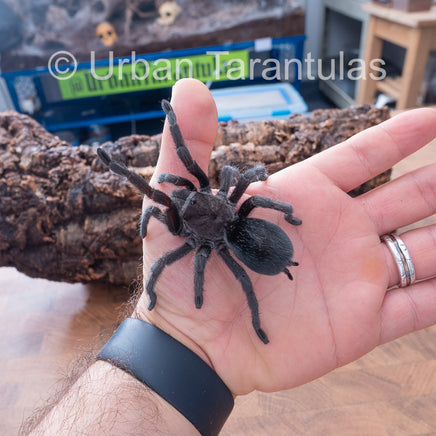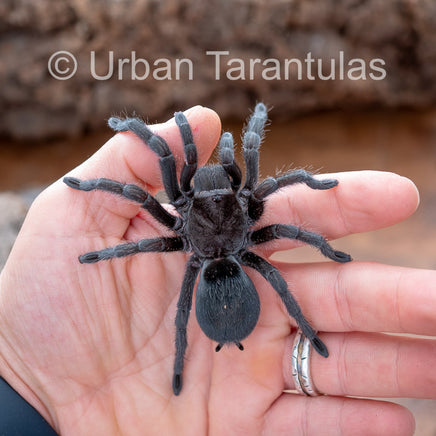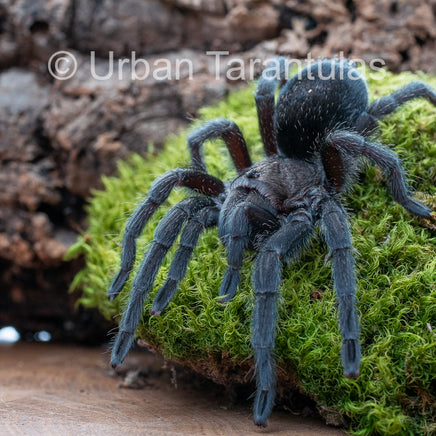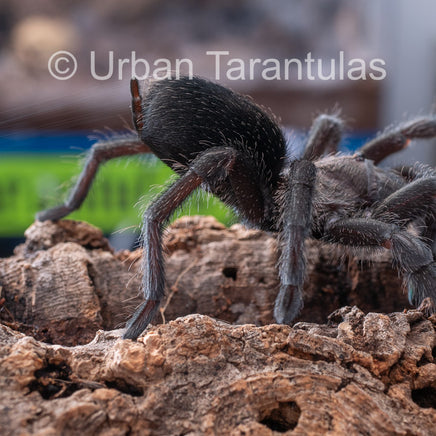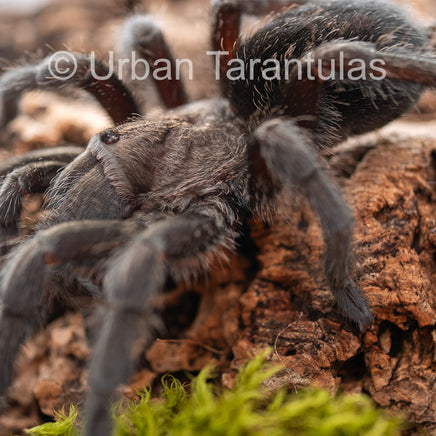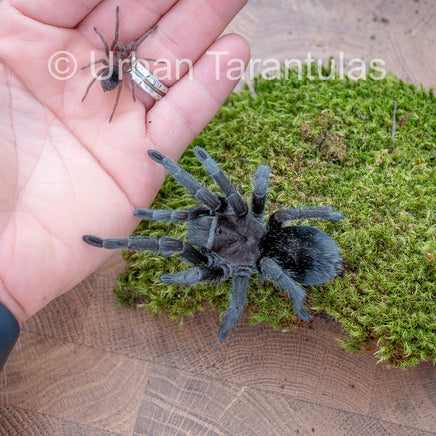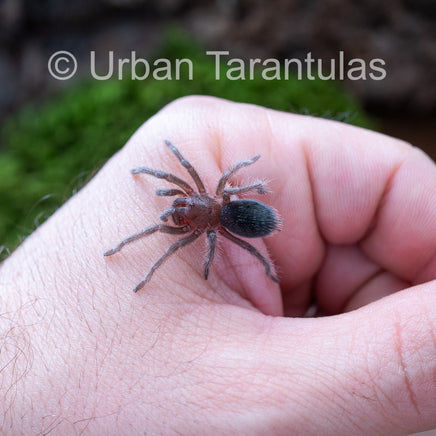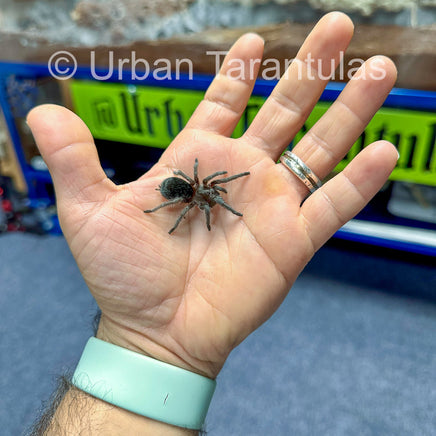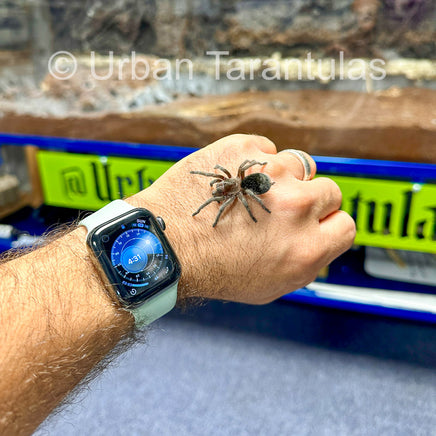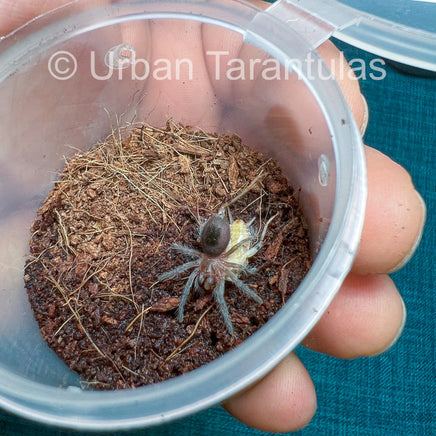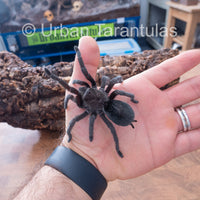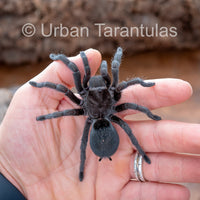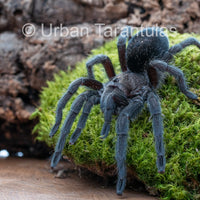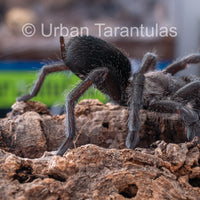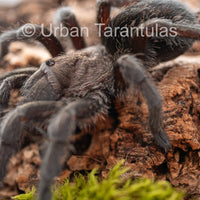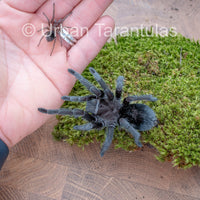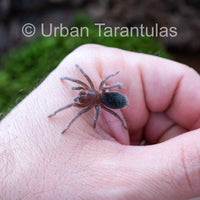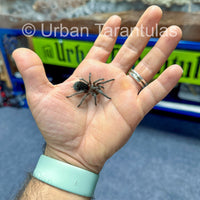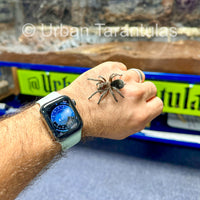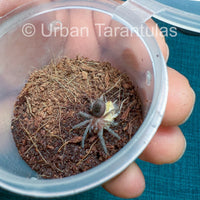Introduction
Meet the Grammostola pulchra, a tarantula that is as captivating as it is elegant. Known for its velvety black coat and serene demeanor, this species is a gem in the tarantula world. Its deep, matte black coloration makes it a standout, and its calm nature allows for a more interactive experience for enthusiasts. This tarantula is not just a pet but a statement piece in any collection.
Care Details
- Temperature: Ideal temperatures for the Grammostola pulchra range between 75 to 85°F (24 to 29°C). At these temperatures, they exhibit healthy growth rates, frequent eating, and regular molting.
- Humidity: This species thrives in a humidity range of 65-70%. Water dishes are not necessary, but they pose no harm if used. I personally choose not to use them in my setups.
- Housing: As a terrestrial species, young Grammostola pulchra can be housed in a 1 oz to 4 oz deli container with proper ventilation. I offer free containers at checkout for these young spiders; remember to request one during your purchase. Adult specimens require an enclosure that is 2 to 3 times their leg span, providing them with ample space to move and burrow.
In-depth Facts
- Latin name: Grammostola pulchra
- Common name: Brazilian Black Tarantula
- Locale: Originally from Brazil, thriving in grasslands and savannah-like areas.
- Category: Terrestrial, with minimal webbing tendencies.
- Size: Females can grow up to 7.5 inches in leg span, while males are slightly smaller.
- Urticating hairs: You can comfortably handle this species, as they are not hair kickers.
- Growth rate: Slow, reaching maturity in 5 to 8 years.
- Life span: Females can live up to 25 years +, whereas males have a shorter lifespan, typically around 5 years.
- Recommended levels: Suitable for all levels of tarantula keepers, from beginners to experienced. And lovers of terrestrial, handleable species :)
Diet
I feed them a mix of crickets and cockroaches, including Dubia, Red-runner, Lobster, and Madagascar hissing roaches. For juveniles, smaller prey like baby crickets and roaches are perfect. If you only have larger prey, just crush its head and place it in the enclosure. Ensure to remove uneaten food to prevent mold. Occasionally, a pinky or hopper mouse can be a great treat, but remember, these should only be given sparingly.
Stay Connected
- Instagram: Follow my Instagram, I'm most active here.
- YouTube: For care and education videos, check out my YouTube channel.
- Facebook: Over here I have all my reviews.
- TikTok: Visit my TikTok for additional content.
Safety Disclaimer
Experiencing a tarantula bite is an extremely rare occurrence, and there have been no recorded fatalities due to a tarantula bite. The venom potency varies across species, with Old World tarantulas generally having stronger venom than their New World counterparts. It's important to handle tarantulas with respect and understanding. In the unlikely event of a bite, stay calm. Most bites result in mild discomfort that subsides within a few hours to a day. I cannot assume responsibility for bites, and handling should be done at your own risk. In my 11 years of experience, I've only been bitten once, and the symptoms were gone after a week. Always prioritize safety for both you and the tarantula.
